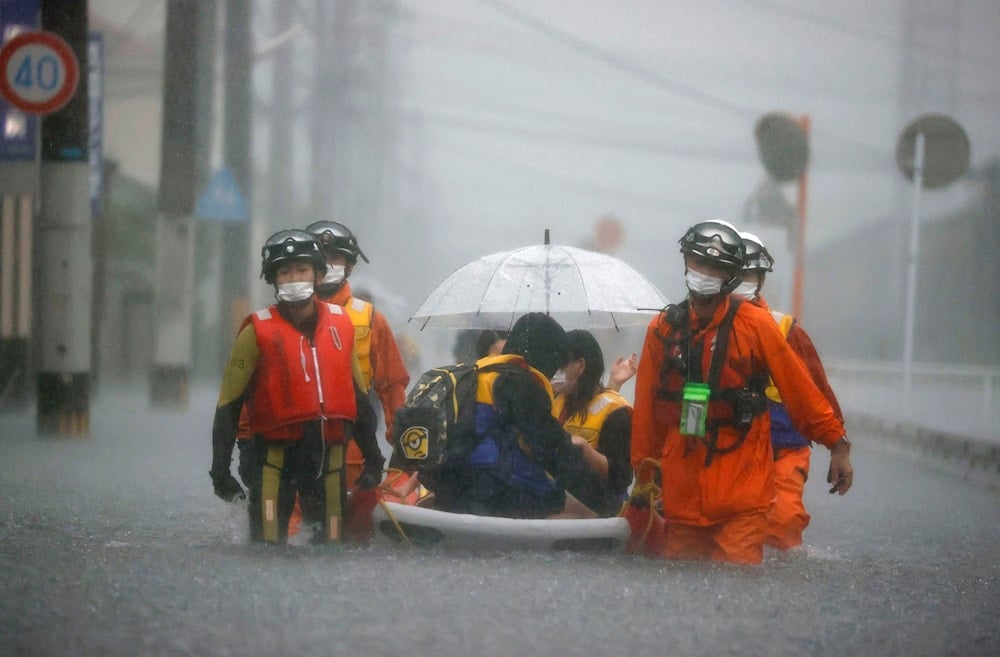Evacuation ordered for 122,400 people in southern Japan
Authorities in Kirishima, Kagoshima Prefecture, issued a Level 5 evacuation order for over 122,000 people after record-breaking rainfall triggered life-threatening flooding risks.
-

Firefighters carry stranded residents on a boat in a road flooded by heavy rain in Kurume, Fukuoka prefecture, western Japan, on August 14, 2021. (AP)
Authorities in Kirishima, Kagoshima Prefecture, Japan, have issued a Level 5 evacuation order, the highest level of urgency, for 122,400 residents after record-breaking rainfall triggered life-threatening flooding risks, Japan’s NHK broadcaster reported.
A heavy rain warning has been in effect in Kirishima since 5:00 am local time (20:00 GMT). Meteorologists said some areas of the city received 495 millimeters of rainfall within 12 hours, equivalent to 1.5 months’ worth of precipitation. Two people have been injured due to the torrential downpour.
River levels in many parts of the prefecture are nearing overflow, and heavy rain with thunderstorms is forecast to continue across both southern and northern areas of Kagoshima Prefecture until Sunday, NHK reported.
A Level 5 danger warning signals an immediate threat to life and requires urgent rescue.
Authorities advise that those unable to leave their homes safely should avoid going outside and instead move to upper floors, seeking the safest possible location inside. Attempting to evacuate under such conditions could pose an even greater risk.
Powerful 8.8-magnitude earthquake strikes
Late last month, a massive 8.8-magnitude undersea earthquake struck off the eastern coast of Russia’s Kamchatka Peninsula on July 30, prompting widespread tsunami warnings and evacuation orders across the Pacific region.
After the earthquake, one of the strongest recorded in the region in recent decades, Klyuchevskoy, the highest active volcano in Europe and Asia, erupted on July 30. The eruption, while dramatic, is part of the volcano's frequent activity cycle.
The earthquake triggered tsunami warnings across the Pacific Basin, prompting evacuations in several countries. In Severo-Kurilsk, waves reaching up to 3-5 meters flooded coastal areas, displacing boats and affecting local industry. Nearly 2,700 residents were evacuated.
In Japan, about 1.9 million people received evacuation alerts as tsunami waves up to 1.3 meters reached its eastern shores. Hawaii recorded waves of up to 1.7 meters, suspending air travel and activating emergency shelters. Minor wave activity was also observed along the US West Coast and parts of Canada.
Authorities in most affected areas later downgraded or lifted tsunami alerts as wave heights remained below predicted levels.

 2 Min Read
2 Min Read








